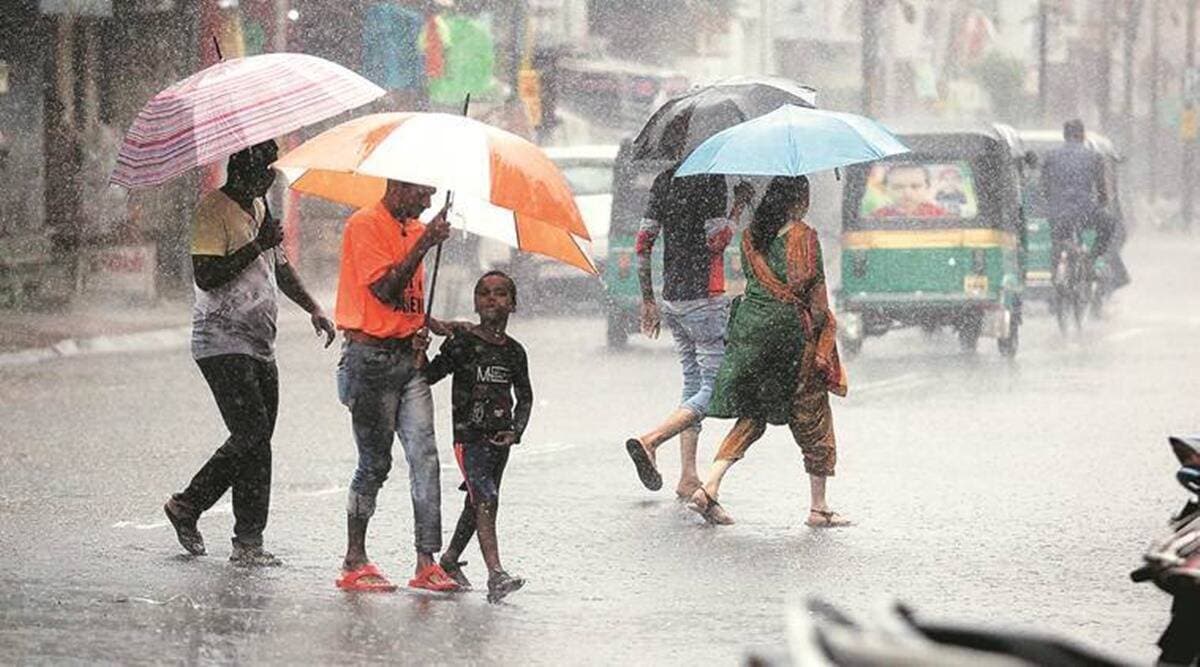 A red alert has been issued for Raigad and Ratnagiri districts with a forecast of extremely heavy rain at isolated places till Thursday.
A red alert has been issued for Raigad and Ratnagiri districts with a forecast of extremely heavy rain at isolated places till Thursday. AFTER AN exceptionally heavy rainfall between Saturday and Sunday, Mumbai witnessed relatively drier and sunny weather Tuesday even as the monsoon activity peaked in areas adjoining the city in Thane, Navi Mumbai, Kalyan-Dombivali since a day back.
By Monday afternoon, the India Meteorological Department downgraded its alert to yellow with a forecast of heavy rain at isolated places. Thane and Palghar have been put on orange alert with a forecast of heavy to very heavy rain at isolated places.
A red alert has been issued for Raigad and Ratnagiri districts with a forecast of extremely heavy rain at isolated places till Thursday.
In the 24 hours, until 8.30 am Tuesday, the IMD’s Santacruz observatory recorded 38.4 mm rain and its Colaba counterpart 35.4 mm rain – both under the moderate category of rainfall. In the corresponding period, Navi Mumbai and Vashi recorded 121 mm rain, Belapur and Nerul recorded 105 mm rain, Airoli 147 mm, Koparkhairane 168 mm and Thane district recorded 146 mm.
Since June 1 this year, IMD’s Santacruz observatory has recorded a total of 1,919.8 mm, which is also 87 per cent of the season’s average rainfall. In this month alone, Mumbai has received 958.5 mm rain, surpassing its average normal rainfall for July. Of the total, 50 per cent was recorded in two days — July 16 and 18.
If the rain continues for the rest of the month, the city could record its wettest July ever — in 2014 the maximum rain for the month was recorded at 1,468.5 mm. In 2005, when the Mumbai floods had followed and the city recorded 944 mm rain in just 24 hours, the month had received a total of 1,454.5 mm showers.
Six wall collapse, 21 tree fall cases
On Tuesday, the Brihanmumbai Municipal Corporation received complaints of six wall collapses, 19 short circuits and 21 tree or branch fall incidents. A 38-year-old man was injured in a tree fall incident in Mulund east late Monday night, officials said.
After a landslide incident at Salamati hillock in GTB Nagar, the BMC, as a precautionary measure, has evacuated 28 residents from the four-five hutments in the area. While 16 residents were shifted to a nearby municipal school, the others made their own arrangement, civic officials said.
Water stock in the seven lakes that provide drinking water to the city has been recorded at 4,80,783 million litres (ml) which is 33.22 per cent of the total capacity of 14,47,363 lakh ml.
Mumbai draws water from Bhatsa, Middle Vaitarna, Upper Vaitarna, Tansa and Modak Sagar, which are in Thane and Nashik districts. Tulsi and Vihar lakes are located within the city limits in Sanjay Gandhi National Park.
This year, despite heavy rainfall in early June, rainfall in catchment areas of the lakes was very poor. Of the seven, Tulsi and Vihar overflowed on July 16 and 18.
- The Indian Express website has been rated GREEN for its credibility and trustworthiness by Newsguard, a global service that rates news sources for their journalistic standards.

